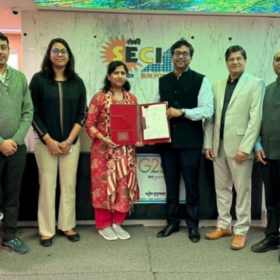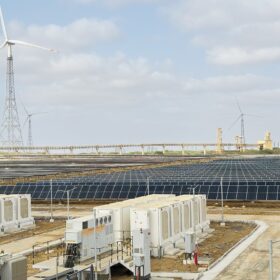The Union Government is finalizing the roadmap and financial outlay for the much-anticipated Carbon Capture, Utilisation and Storage (CCUS) Mission, said Rajnath Ram, Adviser for Energy, Natural Resources & Environment at government policy thinktank NITI Aayog.
India targets to achieve a 45% reduction in emission intensity by 2030. It is aiming for net zero by 2070. This makes CCUS one of the important measures to achieve decarbonization from the hard-to-abate sectors.
Speaking at the 3rd Energy Summit of the Indo-American Chamber of Commerce, Ram emphasized on the importance of energy security and long-term supply contracts for liquefied natural gas (LNG).
He stated that, to achieve the target of 15% natural gas in India’s energy mix by 2030, gas consumption would need to increase two to three times, reaching approximately 180–200 billion cubic meters (bcm).
Ram emphasized that to achieve energy security, the first and foremost requirement is assured long term supply. He stressed on the need for a survey of geographical basins across the country to map the existing resources to reduce import dependence
BC Tripathi, former chairman & managing director GAIL noted that although India has a large network of gas pipelines, they are running at about 50-55% of capacity. He added that the transport sector can be a major area of gas demand, which would help in reducing the use of diesel and carbon emissions.
Sunil Jain, summit chair & chairman, Climate Change & ESG, IACC, and founder partner, Sundev Renewables LLP, said that at least 10-15% of power generation should come from gas as it will complement the intermittency of renewables and result in a smoother energy transition.
Rajarshi Gupta, MD, ONGC Videsh Ltd said that varying and innovative models of gas sourcing are being discussed.
“In ONGC we have decided that we will source about 5 million tonne of LNG and that will be a combination of Henry Hub, crude based LNG and from multiple sources,” Gupta said, while adding that volatility is a certainty going forward and sources will also increase in days ahead.
Addressing the summit, Xiabing Feng, principal commercial officer, US Embassy in India, said, in line with India’s energy security goals, the US can be a major supplier of oil and liquefied natural gas to India: “The United States and India share a commitment to diversify energy resources and enhancing infrastructure. By elaborating American expertise in natural gas, nuclear energy and emerging energy technologies the United States can support India’s ambitious goals for energy security and grid modernization,” Feng said.
This content is protected by copyright and may not be reused. If you want to cooperate with us and would like to reuse some of our content, please contact: editors@pv-magazine.com.









By submitting this form you agree to pv magazine using your data for the purposes of publishing your comment.
Your personal data will only be disclosed or otherwise transmitted to third parties for the purposes of spam filtering or if this is necessary for technical maintenance of the website. Any other transfer to third parties will not take place unless this is justified on the basis of applicable data protection regulations or if pv magazine is legally obliged to do so.
You may revoke this consent at any time with effect for the future, in which case your personal data will be deleted immediately. Otherwise, your data will be deleted if pv magazine has processed your request or the purpose of data storage is fulfilled.
Further information on data privacy can be found in our Data Protection Policy.